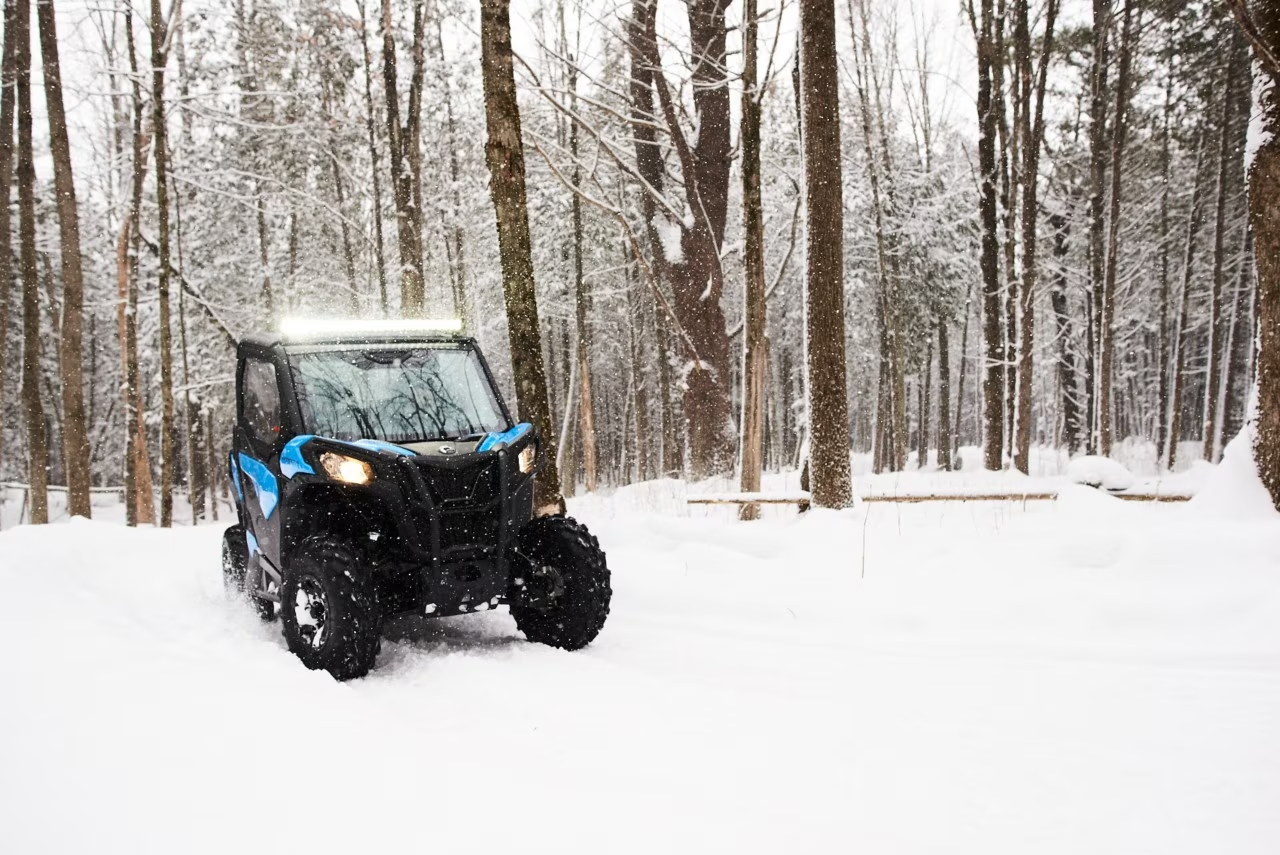

Partners: BRP, McGill, LeddarTech and CM labs
Technical challenges: Controls, AI, vision, mecatronics.
UdeS Team: Prof. François Ferland, Prof. François Grondin, Prof. Alexandre Girard
This project, based at the CTA, aims at adapting driving assistance systems for challenging off-road environments such as forest trails, snow, etc. R&D challenges range from perception algorithms, control algorithms, user interfaces, etc.

This project, based at the CTA, aims at adapting driving assistance systems for challenging off-road environments such as forest trails, snow, etc. R&D challenges range from perception algorithms, control algorithms, user interfaces, etc. BRP, CM labs Simulations, LeddarTech, Université de Sherbrooke and McGill University will co-develop connected and perceptive vehicles for advanced research purposes. The collaboration will also involve Centre de Technologies Avancées - BRP - UdeS (CTA). This joint initiative will enable the parties to investigate, test and validate advanced driver assistance system (ADAS) features such as collision avoidance in off-road environments. Prototype vehicles will be able to "see" their environment in real-time with perceptive sensors, including LiDAR sensors provided by LeddarTech, radars, and cameras while also having the ability to communicate with one another using the latest vehicle-to-everything (V2X) protocols. Vehicles will incorporate some Level II and Level III driving capabilities to enhance driver/passenger safety. To accelerate the development, a digital twin will be created using CM Labs' Vortex Studio. The advanced digital twin will be used by students and professionals as a software-in-the-loop and driver-in-the-loop sandbox. The vehicle will be meticulously modelled with a state-of-the-art high-fidelity simulation that will include the perceptive sensors and validated real-time tire-soil interaction models, thus enabling the team to conduct virtual validation plans, train neural networks and generate large amounts of virtual data.